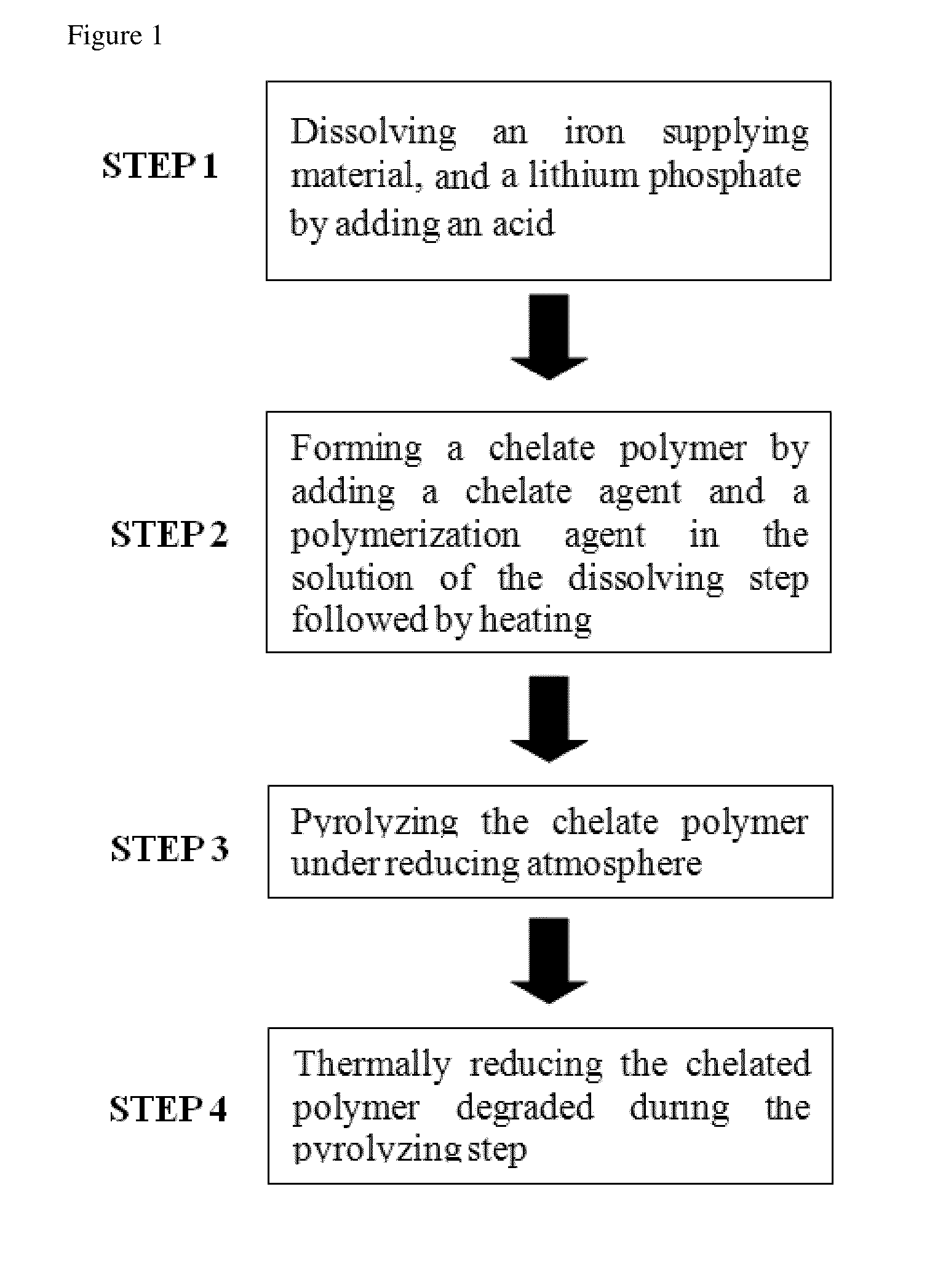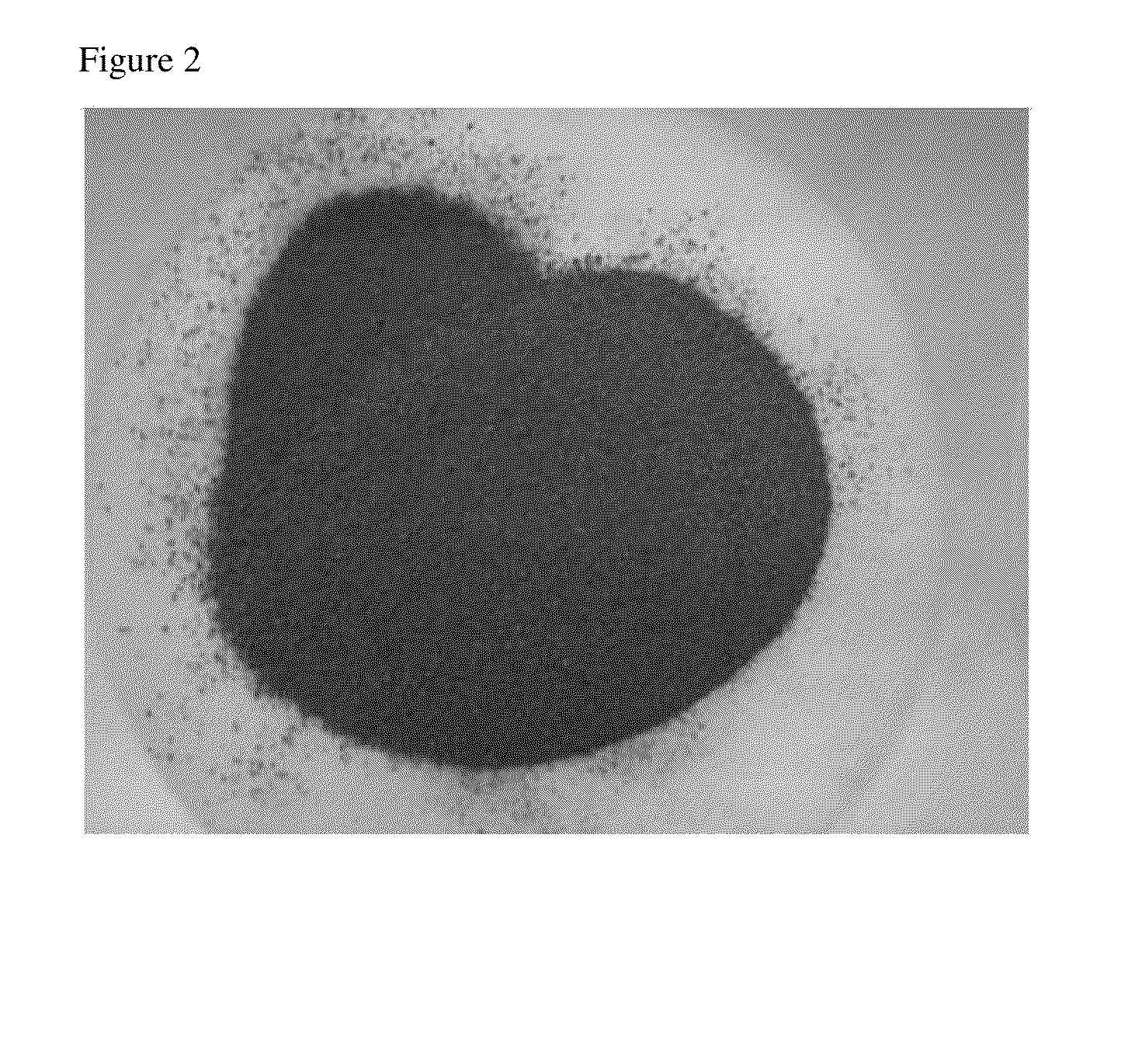Method of preparing olivine cathod material for lithium secondary battery
a lithium secondary battery and cathode material technology, applied in the field of preparing olivine cathode materials for lithium secondary batteries, can solve the problems of low conductivity, unsatisfactory liniosub>2/sub>, and unsatisfactory cathode materials, and achieve superior battery characteristics, simplified conventional manufacturing process, and high conductivity.
- Summary
- Abstract
- Description
- Claims
- Application Information
AI Technical Summary
Benefits of technology
Problems solved by technology
Method used
Image
Examples
example 1
[0055]The molar ratio of an electrolytic iron, lithium phosphate powder, and phosphoric acid was adjusted to be 1:1:1, respectively, and the mixture was subsequently dissolved in the aqua regia mixed with a hydrochloric acid and nitric acid at a volume ratio of 3:1. Citric acid and ethylene glycol were added to the mixed solution, followed by heating at 130° C. for 2 hours. Upon heating at 200° C. for 2 hours for concentration, a chelate polymer was formed. Subsequently, the solvent is volatized by heating at 350° C. for 1 hour, and the heating temperature of 450° C. is maintained for 1 hour under the argon atmosphere for the pyrolysis of the chelate polymer. The final thermal reduction under the atmosphere of CO and CO2, having the volume ratio of 1:1, at 900° C. was performed for 30 mins to prepare LiFePO4 powder.
[0056]The prepared LiFePO4 powder was analyzed using an optical microscope and X-ray diffractometer(XRD). The results are indicated in FIGS. 2 and 3. As shown in FIG. 2, ...
PUM
| Property | Measurement | Unit |
|---|---|---|
| temperature | aaaaa | aaaaa |
| temperature | aaaaa | aaaaa |
| discharge voltage | aaaaa | aaaaa |
Abstract
Description
Claims
Application Information
 Login to View More
Login to View More - R&D
- Intellectual Property
- Life Sciences
- Materials
- Tech Scout
- Unparalleled Data Quality
- Higher Quality Content
- 60% Fewer Hallucinations
Browse by: Latest US Patents, China's latest patents, Technical Efficacy Thesaurus, Application Domain, Technology Topic, Popular Technical Reports.
© 2025 PatSnap. All rights reserved.Legal|Privacy policy|Modern Slavery Act Transparency Statement|Sitemap|About US| Contact US: help@patsnap.com



